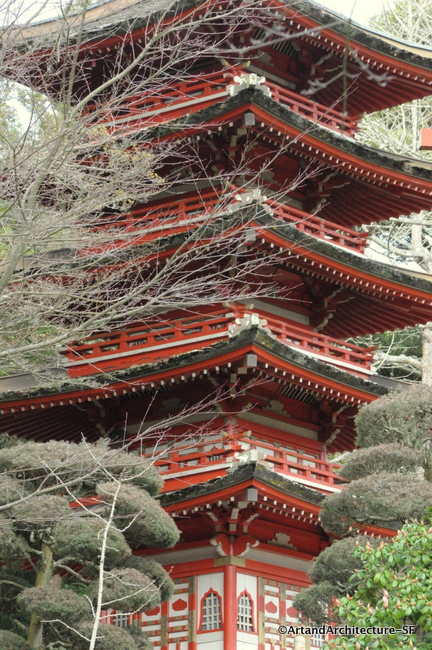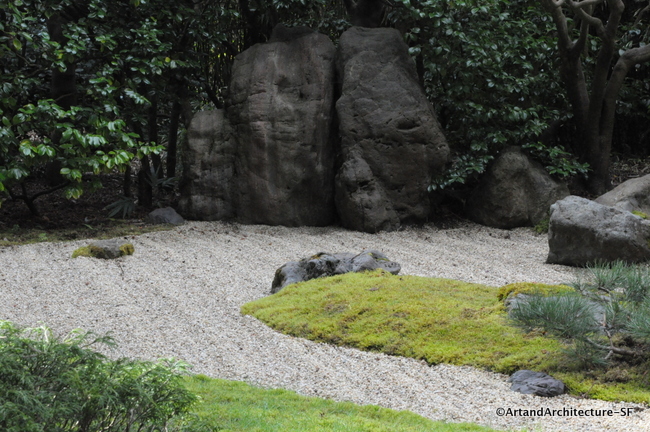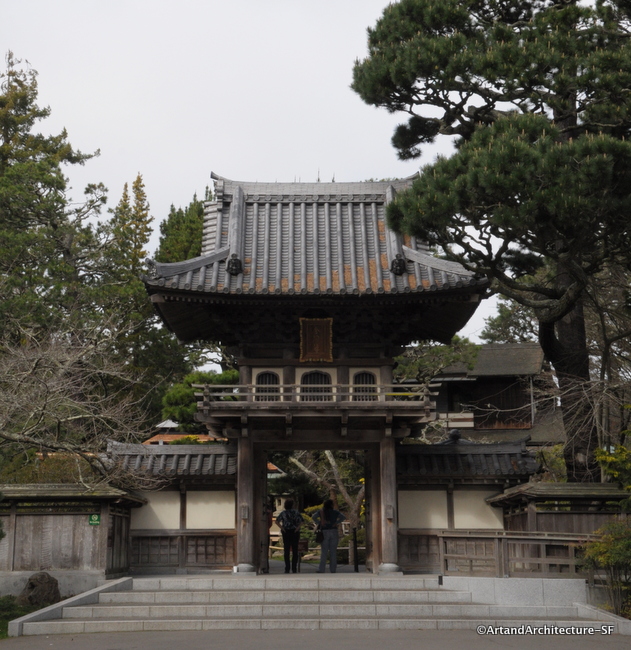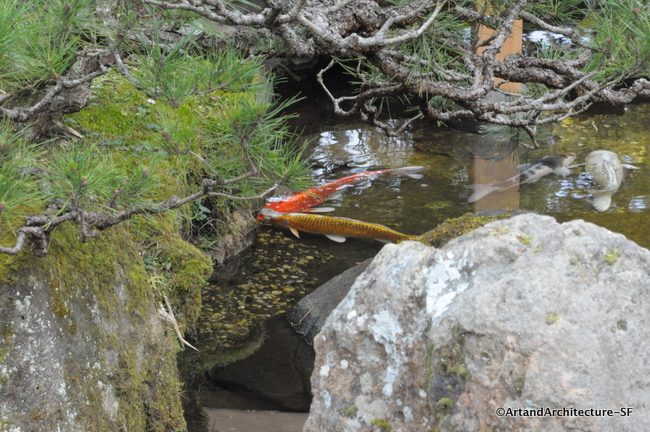Japanese Tea Garden
Golden Gate Park
The Japanese Tea Garden was created by George Turner Marsh as a “Japanese Village” feature of the 1894 MidWinter Exposition. Marsh, an Australian, had lived for several years in Japan and had an interest in traditional Japanese Gardens. To create the village, he brought materials and hired craftsmen directly from Japan. It is the oldest public Japanese garden in the United States.
The Tea Garden was designed and constructed by Makoto Hagiwara.
It used the “Hill and Water” landscape concept to create a traditional Japanese rural style garden. At the close of the exposition, Mokoto Hagiwara approached John McLaren with the idea to convert the temporary exhibit into a permanent park. . Originally one acre in size, the garden was expanded to five acres in 1902 and Makoto Hagiwara designed the expanded garden. Hagiwara specifically requested that one thousand flowering cherry trees be imported from Japan, as well as other native plants, birds, and the now famous goldfish. The Hagiwara descendants continued to live and work in the garden pouring all of their personal wealth, passion, and creative talents into creating a garden of utmost perfection. In 1942 the family was interned during World War II. At that time the garden was renamed the “Oriental Tea Garden” and fell into disarray. When the war was over, the Hagiwara family was not allowed to return to their home at the tea garden and in subsequent years, many Hagiwara family treasures were removed.
While I have been unable to find what subsequently happened to the Hagiwara family , in 1986 the Recreation and Park Department named the roadway in front of the Japanese Tea Garden “Hagiwara Tea Garden Drive” in honor of the Hagiwara family.
The garden consists of a number of elements including entry gates, a teahouse, a gift shop, pagodas,and several bridges. The landscape is primarily evergreen, with deciduous accent plants. Meandering paths follow and cross the small waterway and ponds. Stone is used extensively in many of the site elements.
The Main Gate, which dated to 1894, was reconstructed in 1985. The South Gate was also reconstructed in 1985.
 The five-story pagoda was originally constructed for a Japanese village at the 1915 Panama Pacific International Exposition. It was purchased by the Hagiwara family and moved to the Tea Garden after the fair closed.
The five-story pagoda was originally constructed for a Japanese village at the 1915 Panama Pacific International Exposition. It was purchased by the Hagiwara family and moved to the Tea Garden after the fair closed.
The name ‘Japanese Tea Garden’ was officially reinstated in 1952.  In 1953 the Zen Garden, designed by Nagao Sakurai and representing a modern version of kare sansui (a dry garden which symbolizes a miniature mountain scene complete with a stone waterfall and small island surrounded by a gravel river) was dedicated at the same time as the 9,000-pound (4,100 kg) Lantern of Peace, which was purchased by contributions from Japanese children and presented on their behalf as a symbol of friendship for future generations.
In 1953 the Zen Garden, designed by Nagao Sakurai and representing a modern version of kare sansui (a dry garden which symbolizes a miniature mountain scene complete with a stone waterfall and small island surrounded by a gravel river) was dedicated at the same time as the 9,000-pound (4,100 kg) Lantern of Peace, which was purchased by contributions from Japanese children and presented on their behalf as a symbol of friendship for future generations.
A very in depth history of the garden can be read here.


Fascinating history — I had no idea that the garden was so old! That pagoda is gorgeous!
What a lovely place! And a sad story of the internment of innocent people. The same thing happened here on the west coast during WW ll.
Gorgeous! Great shots too.